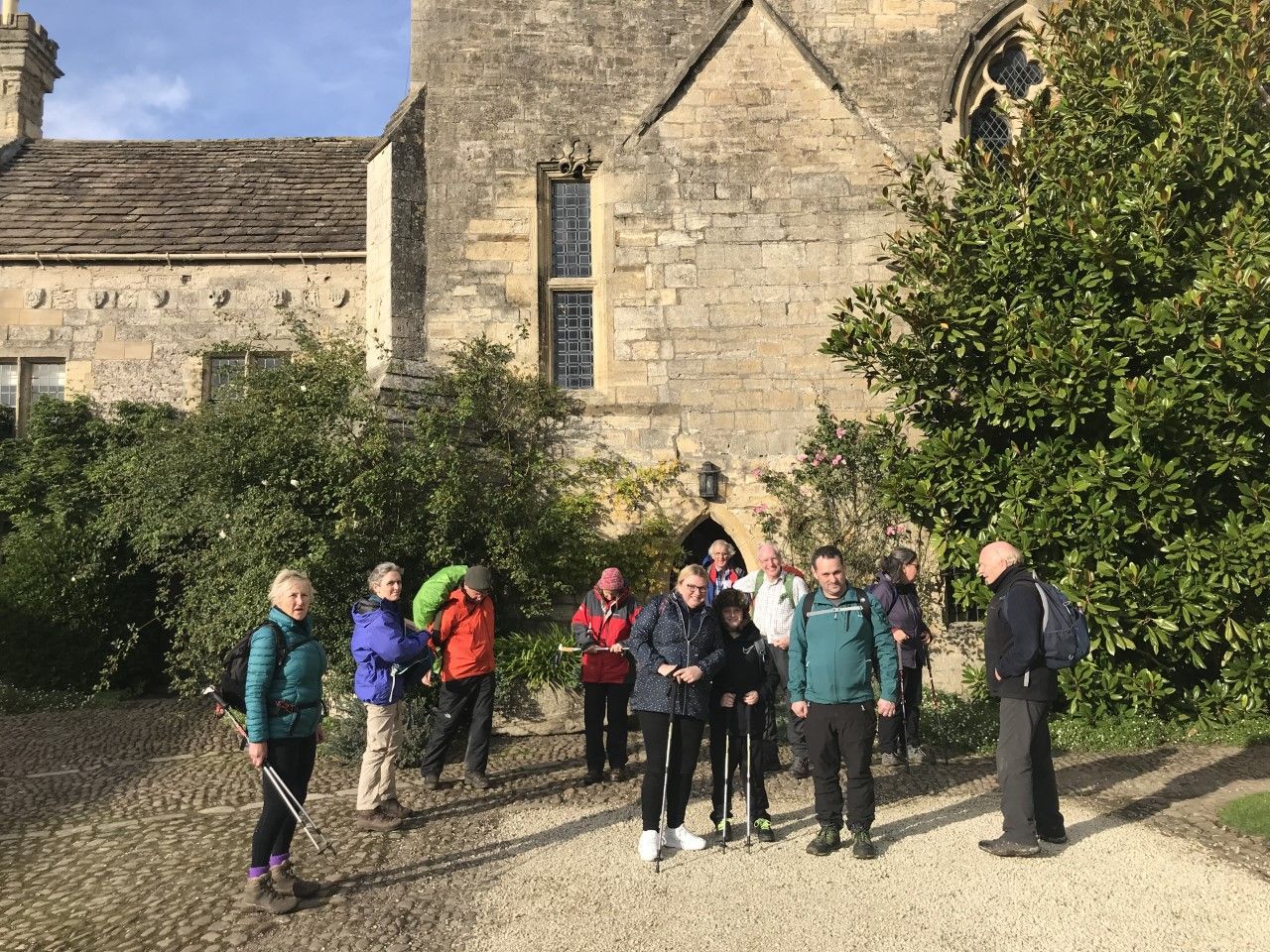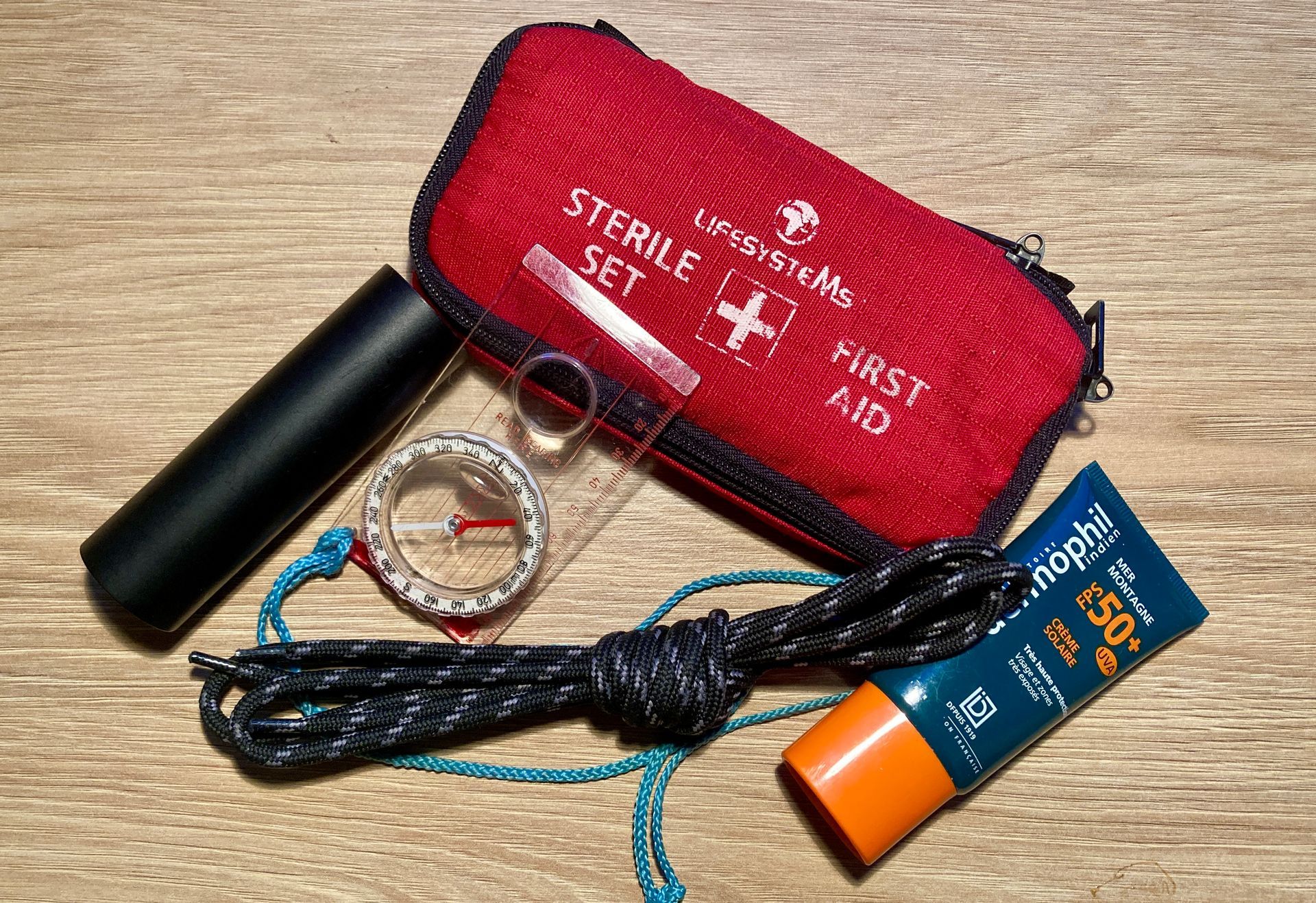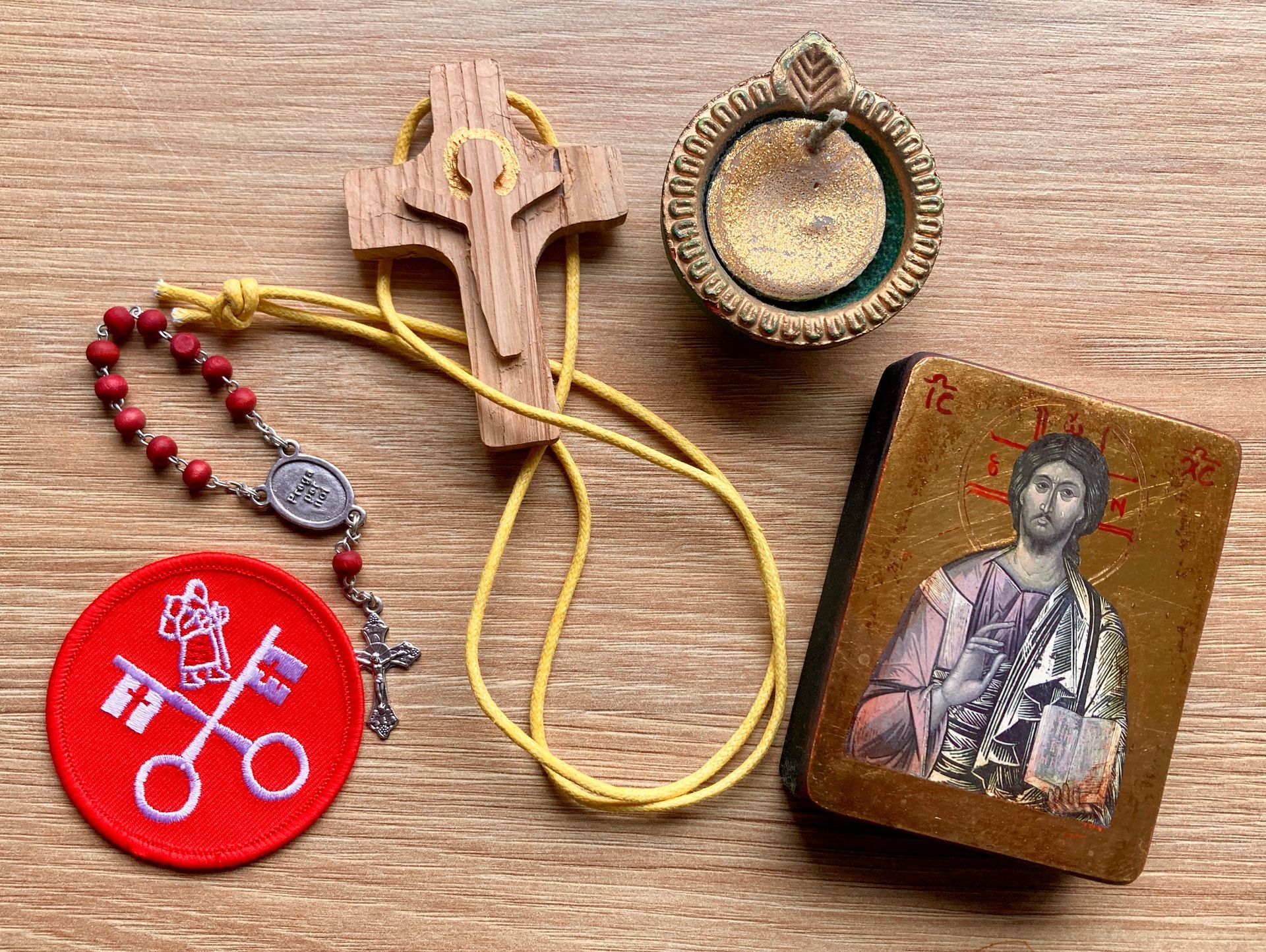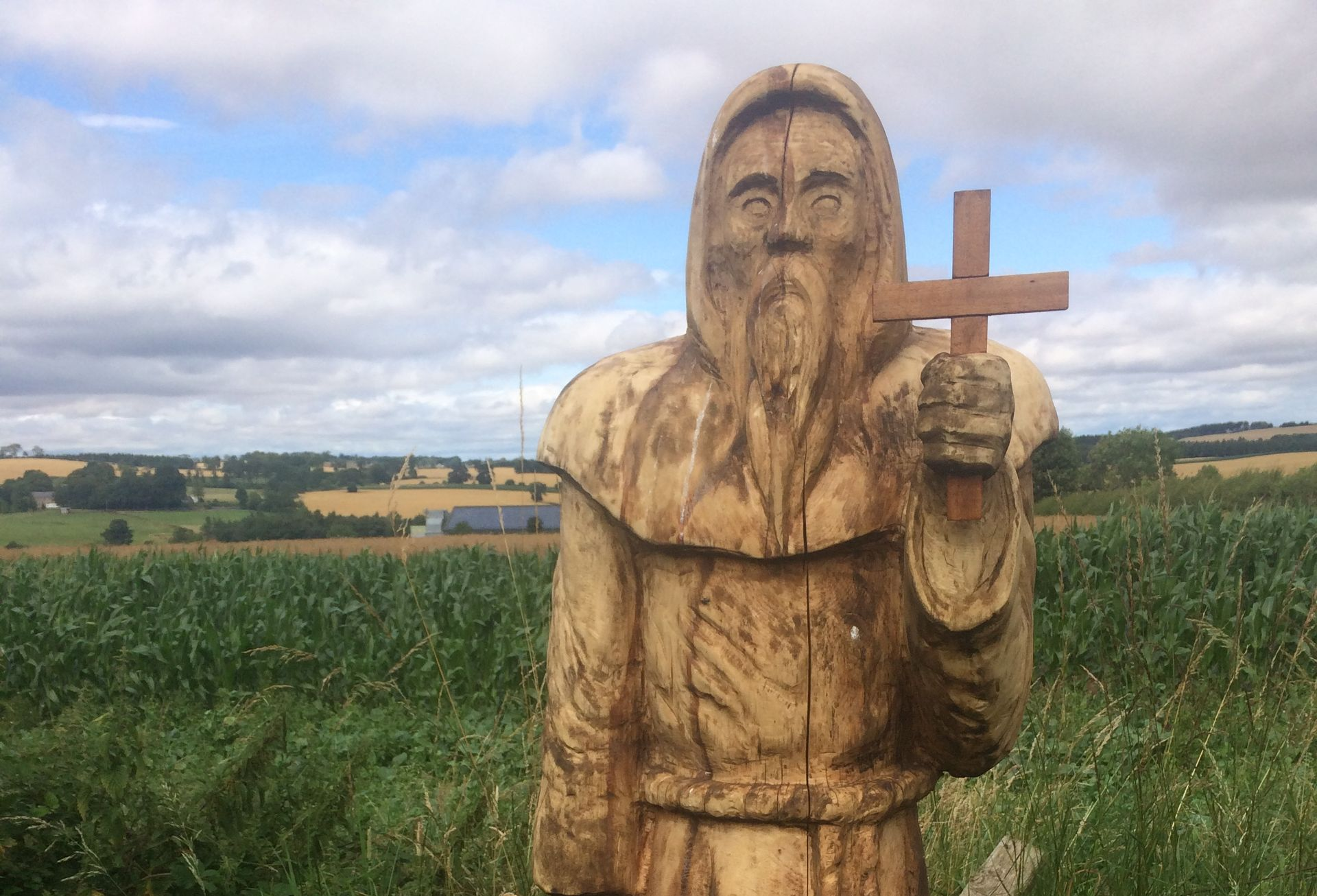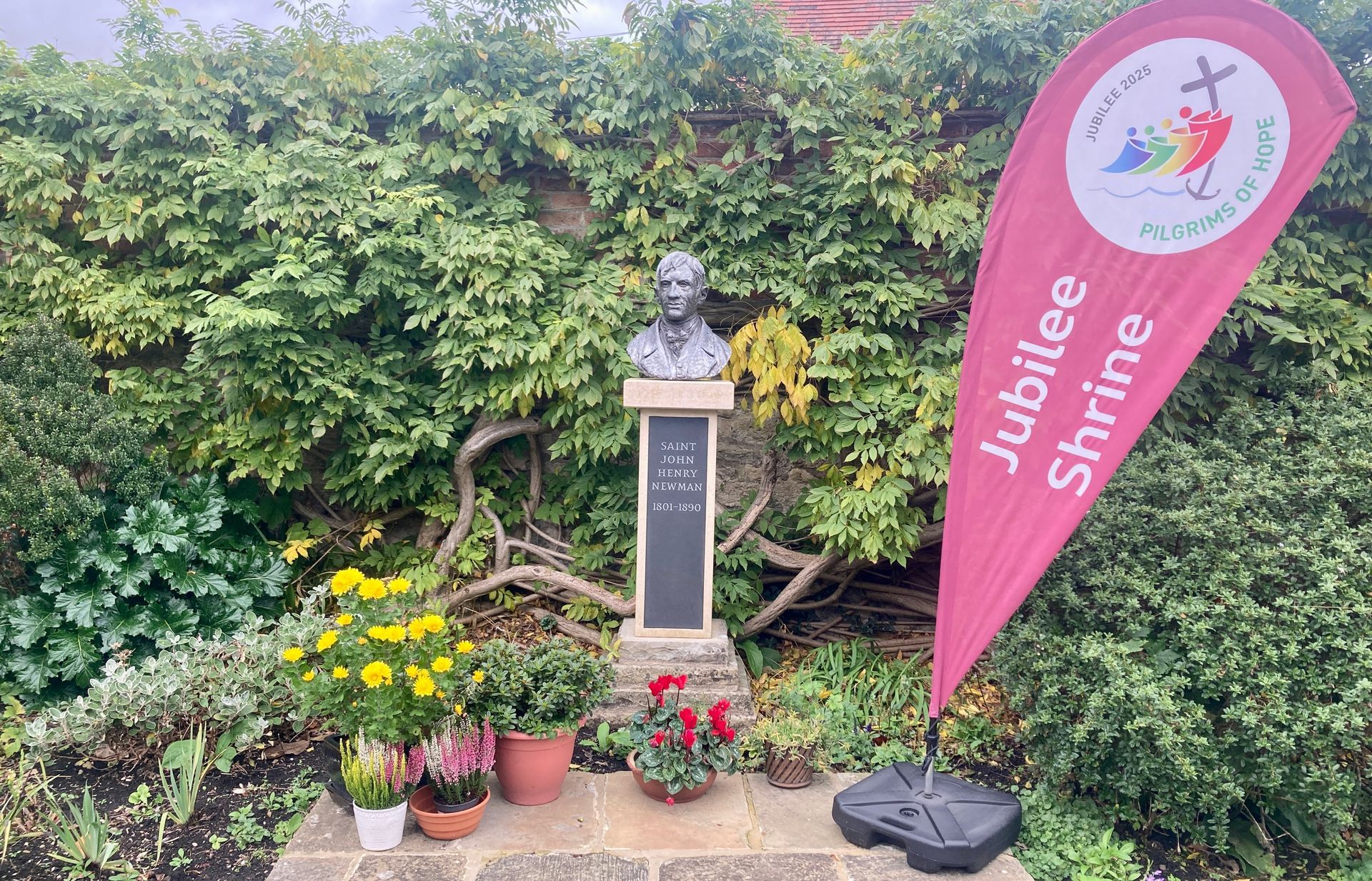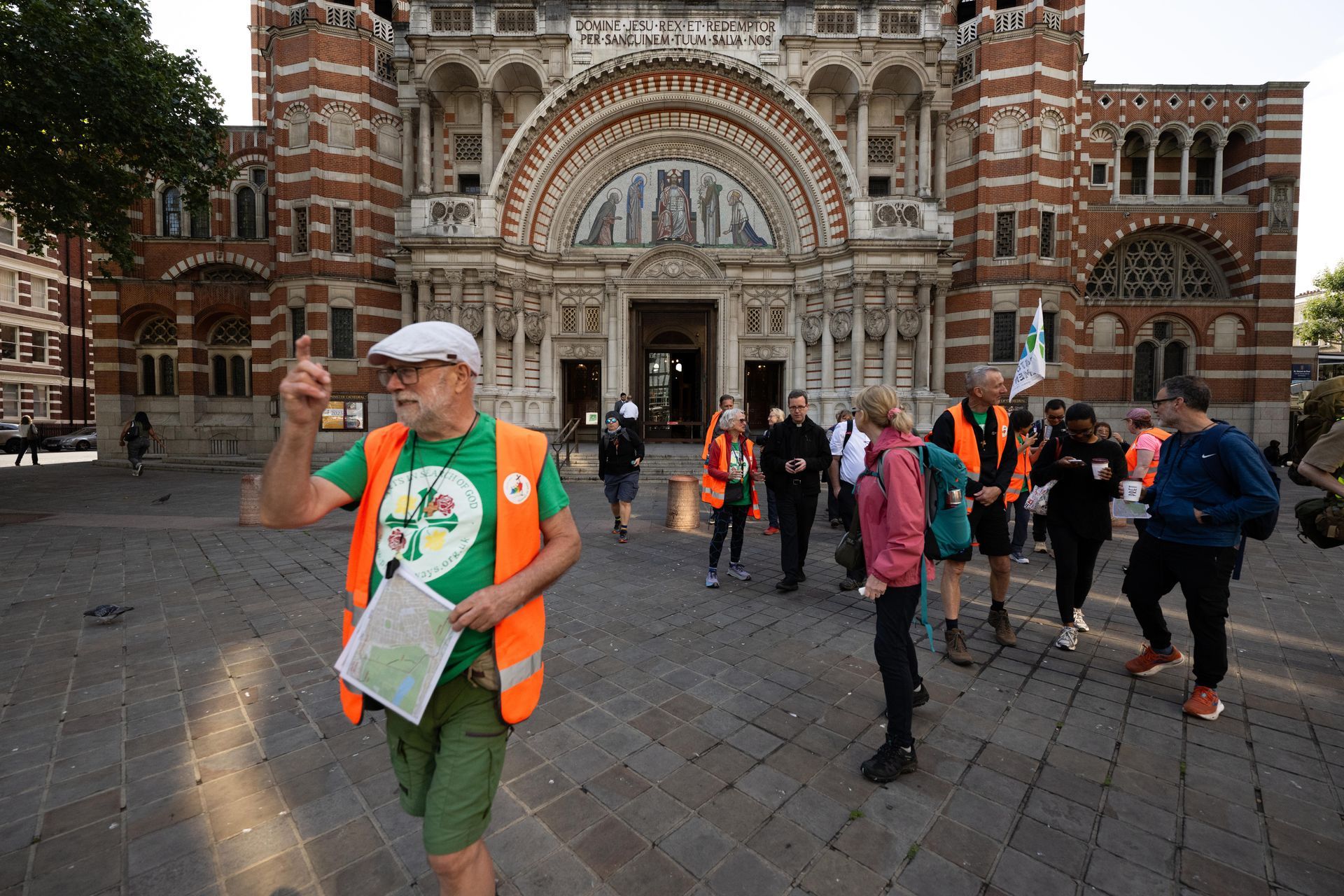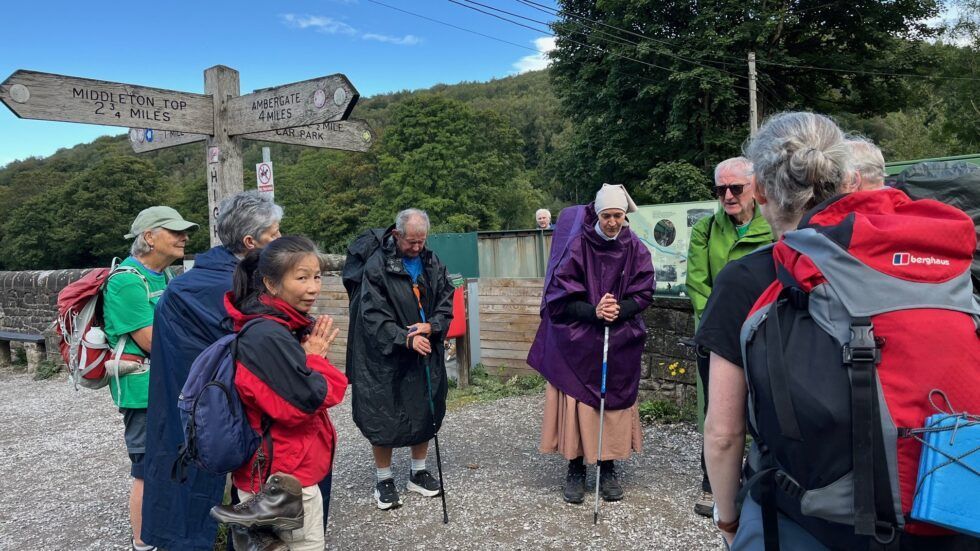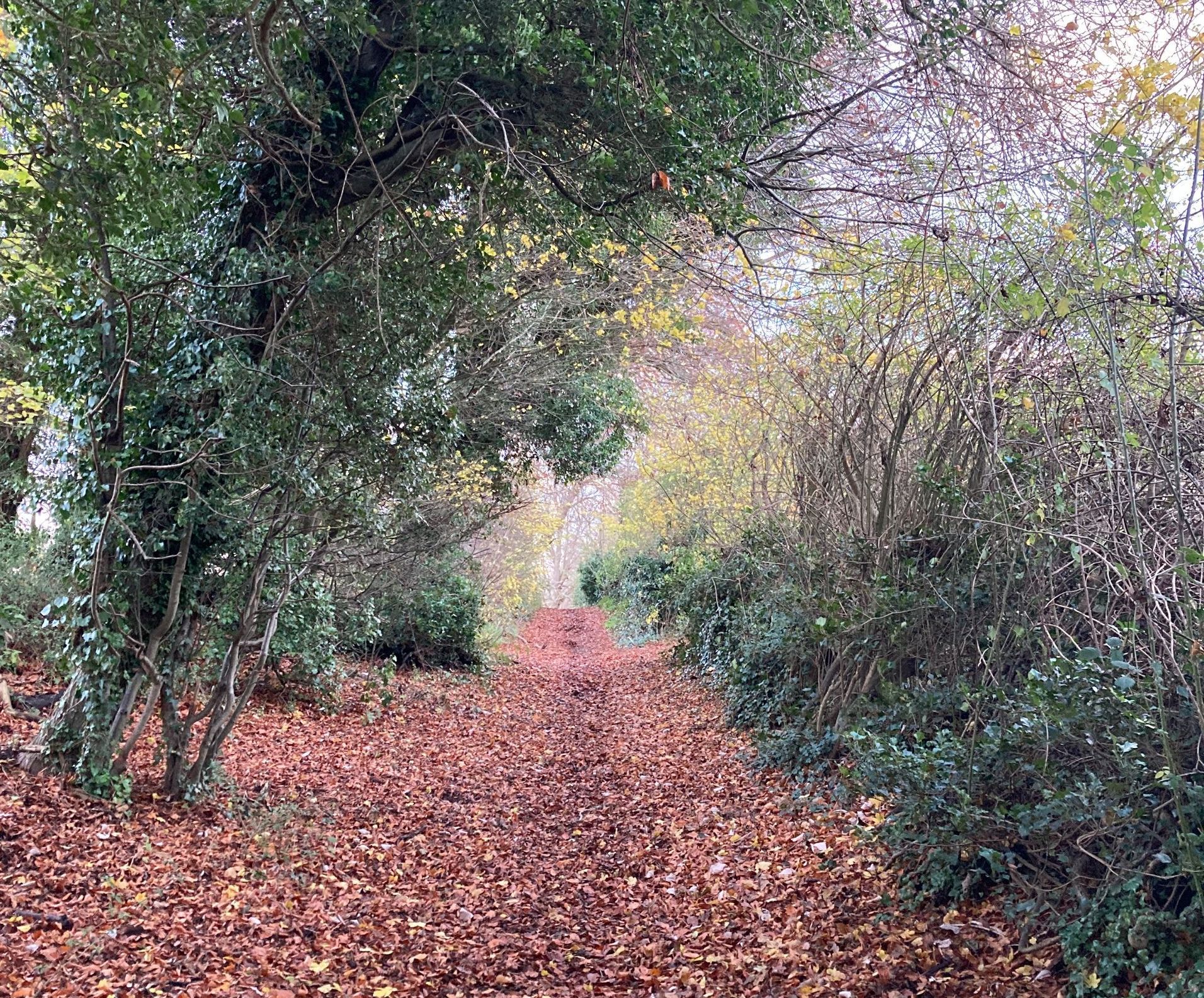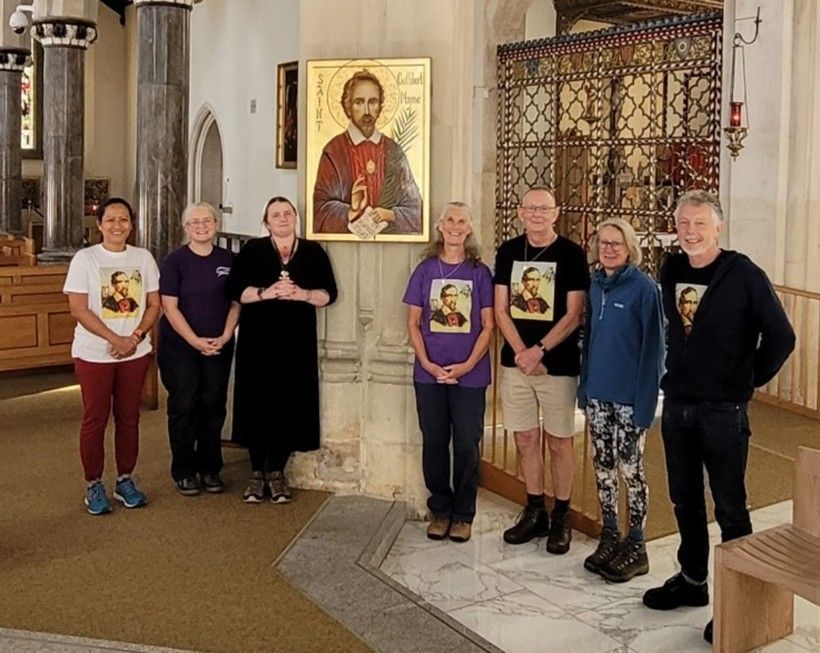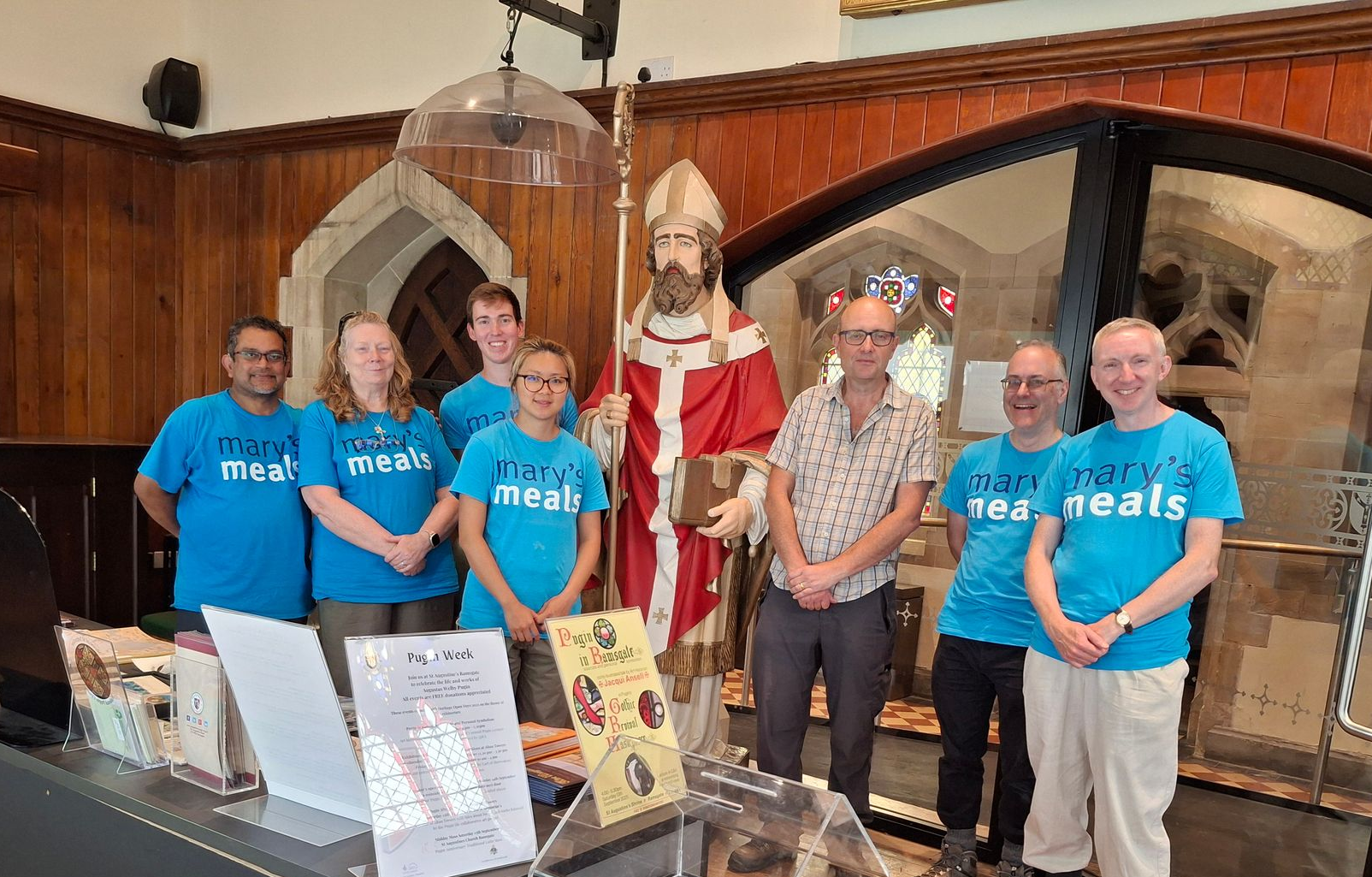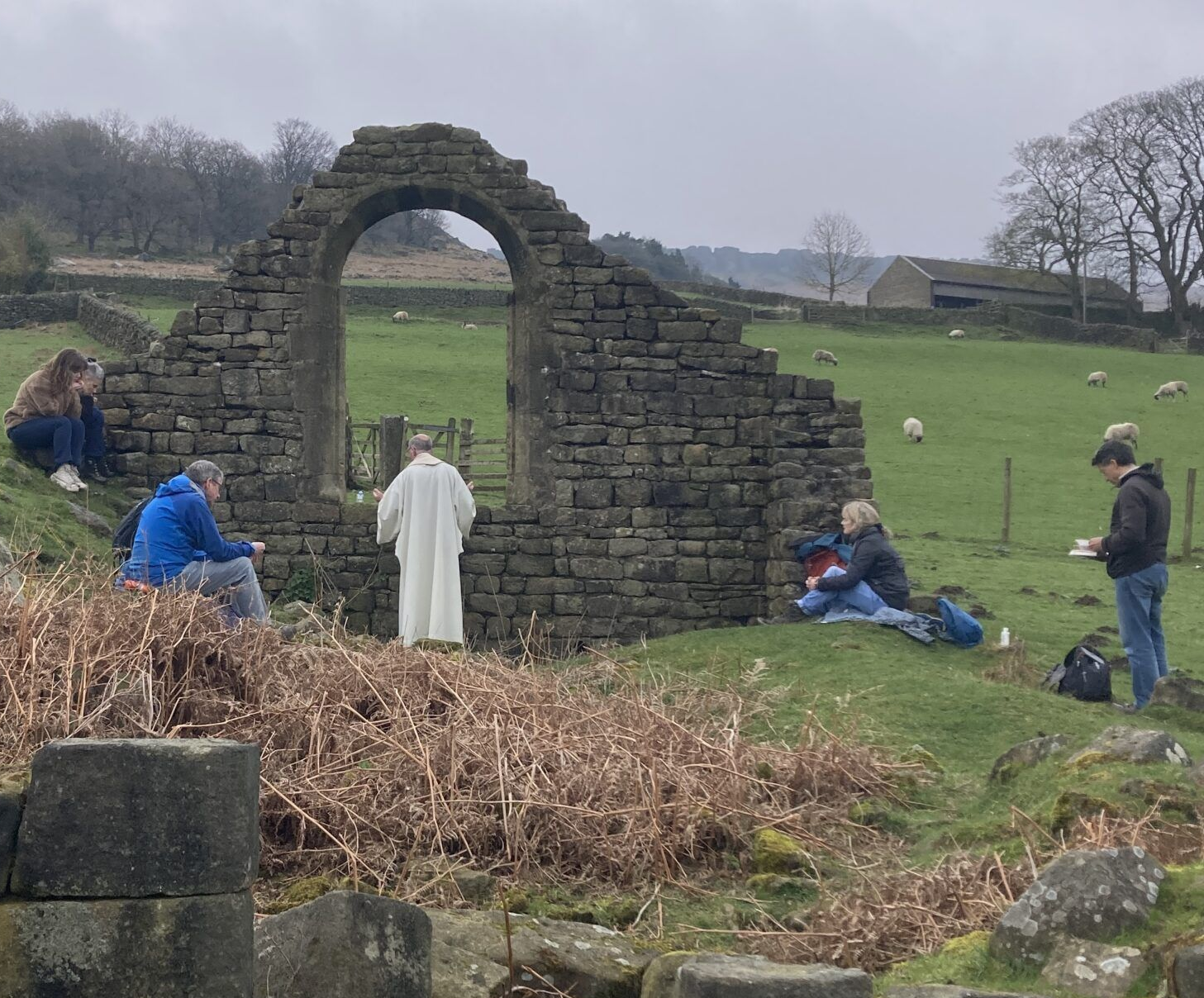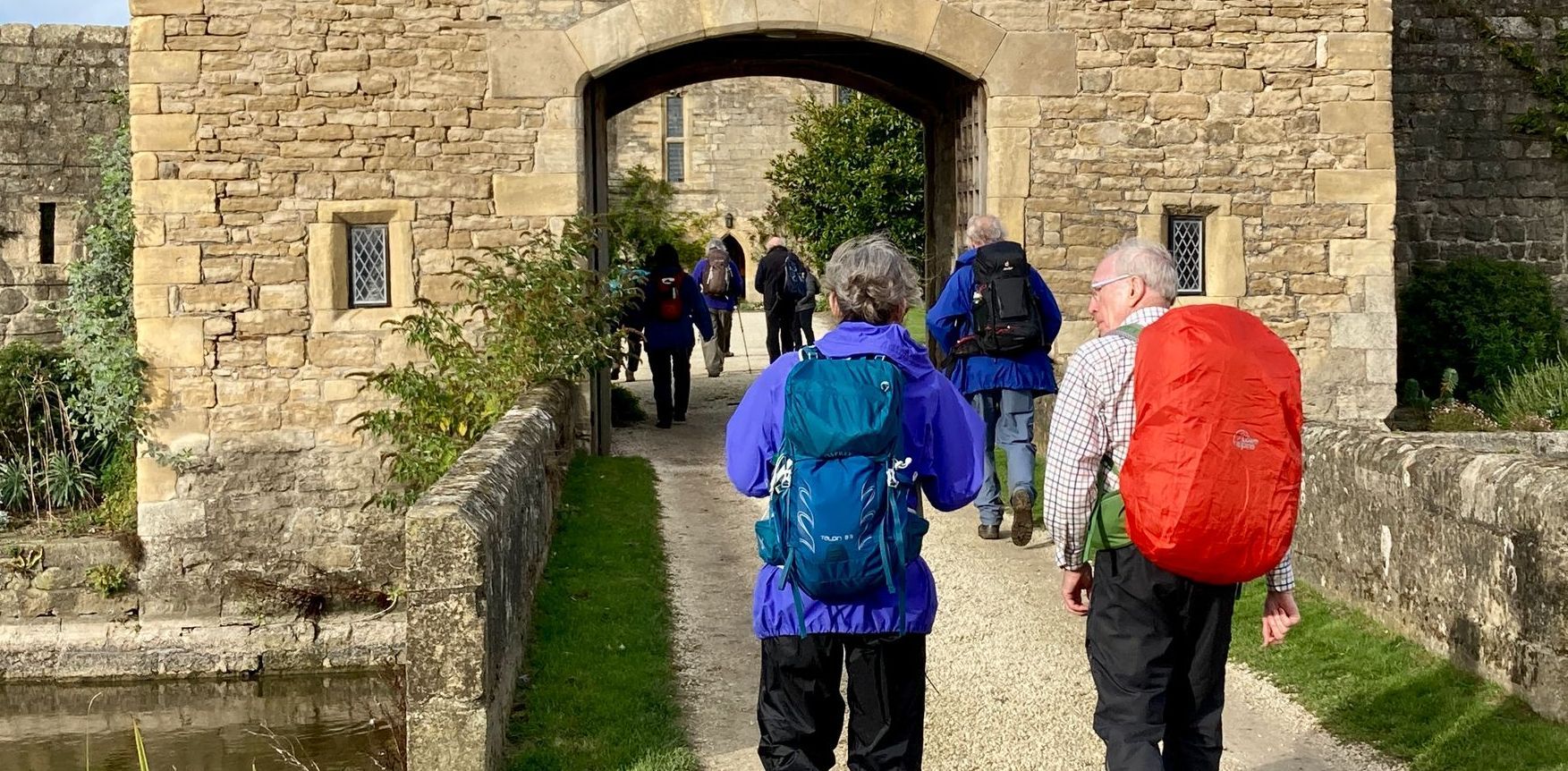Feasting on the Holy Mountain
I’d been warned not to expect too much from the food on Mount Athos and, granted, things hadn’t got off to a great start on the culinary front. I found myself, after a long journey involving two buses and two boats, at the Monastery of St Paul’s. Like most of the twenty Orthodox monasteries on Athos it’s in a spectacular location, perched in a little valley 150 metres above the rugged coast-line and with a sheer cliff-face rising up behind it.
The twelve newly-arrived guests (eleven Greeks and me) had come through the impressive, porticoed main gate, entered a tranquil inner courtyard and been directed up a long flight of wooden stairs to the guest wing. French doors opened at the far end of a formal welcome room onto a balcony and to one of the most spectacular views I’ll ever see, across the sea and all the way to mountains in the distance. I would spend a lot of time sitting on that balcony and gazing at that view. I would also be spending a lot of time in the church because (and I’d been warned about this as well) the Orthodox services are long.
I was in place at the back of the church at 4.45 p.m. when vespers was due to begin but not much appeared to be happening. There were a couple of monks standing in the choir stalls and pilgrims were arriving in dribs and drabs and were going round kissing icons and writing prayer requests and lighting candles. After a little while, a monk strode around the outside of the church beating on a long plank with a wooden mallet. This, I was excited to see, was the striking of the semantron, and the traditional call to prayer on Athos. Sure enough, one of the now about half a dozen monks starting reciting something but still the wandering continued, and it sort of went on throughout the service, which took about an hour and twenty minutes. At one point, a monk came past with a thurible spreading incense, and there was some chanting. It was plaintiff but tuneful with one monk singing the main line and others providing a harmony.
At the end of the service everyone processed into a large, high-ceilinged refectory, where I counted eighteen monks and thirty-seven guests. Thirty-six of those guests were seated on tables on one side of the refectory, with me (as the sole Catholic) on my own on the other. I was pleasantly surprised when what I assumed was a starter was relatively substantial, if not particularly tasty. It was a sort of rice pudding that was only slightly warm. And that was accompanied by bread that wasn’t exactly stale but wasn’t completely fresh either, a dish of olives which were nice, and a cucumber. I ate as much as I could and began to fantasise about what the main course might be. And then the awful realisation dawned on me, as we all stood up for a final blessing from the head monk, that there was no more to come.
I have to confess that I was rather disappointed the next morning to see that breakfast at half past six was much the same as dinner had been, and it was coming on the back of a marathon night liturgy which had begun at 2.45 a.m. I sat on my own again in front a metal bowl which, this time, contained a kind of chick pea mush, and again was barley lukewarm. And there was the usual dry bread, dish of olives, and jug of water. ‘No Greek coffee?’ I mused. ‘No cappuccino, café con leche, hot chocolate or frappé? No butter, no jam?’ How, I wondered, did these guys survive on this? Three and a half hours in the church and then all they get is dry bread! What on earth did they have when it got to Lent? And how could they possibly live without ever seeing women? This final musing should be explained by the thousand-year-old Avaton, a law which prohibits women from setting foot on Athos. Non-compliance is punishable by up to twelve months in prison!
As I was waiting for the ferry to take me back to the main Athonite port of Dafni and then onto the next monastery (guests are allowed to stay just one night at each monastery) I got chatting to Pavlos, a young Greek man. He looked surprised when I asked him whether a monastery would give me food if I got there too late for lunch. He explained that the monks had just two meals a day, breakfast and dinner. “So, no women and no lunch!” I remarked to him, rather ruefully.
My arrival at Iveron, a fortress-like building on the other side of the narrow peninsula was on the eve of the birth of Theotokos, the Mother of God. With the Holy Mountain being dedicated to Mary, this is a major feast for the monks. It would mean that the night service would be even longer than usual, from 8 p.m. to 2 a.m. I was starting to relax into the Orthodox liturgy, unchanged in over a thousand years, and to let it wash gently over me. There was the usual kissing of icons and repeated signs of the cross as people entered the church. A monk would read in quick-fire ancient Greek from the holy scripture. Then the chanting would start: one or more monks singing the main melody line; others providing a bass harmony which rose and fell in fourths. It was hauntingly beautiful. The action would move around the church, with different bits of the liturgy punctuated by the swinging of the thurifer. At one point, there was the lighting of candles on an enormous candelabra.
I made it to 10 o’clock, had some sleep in my dormitory and returned at midnight for another brief stint. The morning prayer began at 6.30 a.m. and I assumed it would be a short one after the nocturnal marathon. It wasn’t! We finally emerged from the church at 9 o’clock. We were rewarded with sweetbread soaked in wine, on account of the feast day, then the massed ranks of monks and guests were crossing the large cobblestoned courtyard and entering a cavernous dining room. I was allowed to join the other guests on the long wooden tables for what was the Mount Athos equivalent of a medieval banquet. There was the usual dish of rice pudding, although this one had been cooked in lemon and seasoned with dill. A second dish contained some kind of fish with a green vegetable I didn’t recognise. And there was a glass of red wine. Also a sweet wrapped up in silver foil that was like an exotic kind of chocolate roll. It was all a feast for the taste buds, just as the colourful frescoes on the walls were a feast for the eyes. On the way out, a young novice monk saw me eyeing up some leftover sweets and gave me two to take away and smiled at me. I was touched.
Day 3 took me to the smaller (and stricter!) monastery of Philopheou. It was strict in the sense that, as well as being told that I couldn’t go into the church during the service but could sit in the outside porch, I was asked to eat dinner after everyone else had finished. It didn’t bother me, especially when I sat down with a Polish father and son to see that we had a decent-looking meal in front of us. The regulation metal tin contained two round things that I took to be meat cutlets and they were served with a nice-looking sauce and mashed potato. Never have I been happier to see meat and potato. I’d thought the monks didn’t eat any meat, and I heard later from another guest that what we’d eaten was in fact tuna. There was a dish of broccoli besides. When we’d nearly finished, one monk realised he’d forgotten to give wine to the Catholic infidels so that was duly delivered to us. It was hard to describe what kind of wine it was. It wasn’t red, but it wasn’t really white either. Monk wine? As I pondered that, another guy passed by with the leftover dishes from the main sitting and gave me an untouched tin of the tuna and mash. I polished that off as well and for the first time in three days on Mount Athos my tummy was nicely full.
I’d been struck at Philopheou by how a monk cleaning the toilets was continually reciting prayers as he worked. It was that ‘prayer without ceasing’ that St Paul writes about. The Orthodox clearly took that very seriously. And in my conversations with Orthodox pilgrims, there was frequent reference to the holiness of various monks. The views from that monastery were also stunning: over the Aegean Sea and all the way to the island of Thasos in the distance. And with it being on the east of the peninsula there was a sunrise to die for the following morning. I probably should have been in the church (or rather at the back of it) when it was happening but there was no way I was going to miss that spectacle. Philopheou was also, in spite of its strictness in some areas, the place where I got the full-Monty monastic welcome. At St Paul’s and Iveron, guests were given on arrival a glass of cool water and a loukoumi, Greek-style Turkish delight. At Philopheou, the water and loukoumi were supplemented by a glass of tsipouri, the traditional 45 proof liquor. Then, the icing on the cake, a cup of strong, syrupy Greek coffee was provided.
Day 4 brought me, via a hot and bumpy hour-long trip in an over-crowded minibus to the fortress-like Great Lavra, the oldest and most influential monastery on Athos. The entry of the new guests was delayed as the guestmaster berated a group of eight Moldovans for having the wrong diamonitirion (the official permit for entry onto the peninsula). Three Latvians were also told off for something or other but eventually we were allowed through and were sitting at benches on a balcony eating loukoumi and sipping from glasses of cool water. There was a collective whoop of delight from the Moldovans and the Latvians when a monk appeared with a tray filled with glasses of tsipouri. I was pretty happy too. Also when I saw what was for dinner.
Following vespers, everyone crossed the courtyard to the refectory, which was an impressive high-ceilinged building in the shape of a cross. The walls, like the church, were completely filled with frescoes and the dining-tables were like nothing I’d ever seen before. They were a series of semi-circular wooden benches around large, marble tables. And with the solid, stone floor it produced a rustic yet intimate effect. Those marble tables were laden with what I could see straight away was a decent meal. In the metal tins was a stew of potatoes, greens and beans and it was really tasty. There was a side dish containing a salad of beetroot and green leaves, plus nice bread and a generous carafe of wine per table of eight. There were dishes with extra potatoes, and for dessert, an enormous platter of red grapes. As had been the case the day before at Philopheou, I felt nicely full.
I missed breakfast because the minibus taking people back up the peninsula was leaving at 6.45 a.m. It meant, however, that I was able to gaze out at the reddening of the sky over the sea and I even got to behold the sun appear on the horizon. That was a special moment. I had the pleasure that day of a three-hour hike through the forest to Vatopedi, another of the ‘Big three’ monasteries on Athos, together with Lavra and Iveron. I also had the pleasure of yet another very good meal. There were about eighty of us in the Vatopedi guest refectory arranged on wooden tables of ten. There was a tasty spaghetti dish, with a bit of fish to add to it, so too some parmesan cheese. Slices of nice sourdough bread were in a basket. Plus there was a flask of eminently drinkable white wine, and a bottle of a delicious red fruit juice. For dessert there were two types of melon: galia and honeydew. The galia melon was mouth-wateringly good. I managed to get seconds of the spaghetti and two pieces of melon before time was called on proceedings. We had, as usual, eaten in silence, whilst listening to a monk reading.
The night liturgy at Vatopedi began at 4 o’clock but I had a lie-in until 6. There seemed to be some kind of distribution of communion at 7 o’clock, after which everyone began processing out of the church. “Great!” I thought, “time for breakfast.” But the massed hordes of men weren’t going towards the refectory. They went instead to a smaller church and crammed themselves in there and set about a further kissing of icons. It was standing room only, so I stayed outside with a few other stragglers. Whatever they were doing in there, it went on and on and on. Eventually, at 8.30 a.m., everyone was trooping across the vast courtyard and up the stairs and into the refectory (actually called Trapeza, meaning table in Greek), and I was amazed to see that it was yet another decent-looking meal. There was a big dish of stuffed aubergine, plus the obligatory dish of olives. There was the divine red juice from the night before. There were grapes that looked like they’d just been picked from the vines (they probably had). There was even the white wine from the night before. I didn’t indulge, although several of the guys did.
I was well fuelled for the journey, via two minibuses and a ferry, to my sixth and final monastery, Gregoriou. On the way, I had a lovely encounter with a man called Dmitry. He was ex-Russian ‘special forces’ and seemed keen to talk to me. I was touched when he bought me a coffee in Karyes, the small town in the centre of Athos from where minibuses to the various monasteries are arriving and departing.
Gregoriou is on the west side of the peninsula and is another of the monasteries that by some architectural miracle have been built onto the mountainside just above the bay. It’s an utterly idyllic spot. Sharp rocks emerge from a sea which is pure blue in colour and changes to a lovely turquoise by the shore. And on the far side of the bay there is the outline of more land. As I walked off the boat and into the guest house at the water’s edge I felt like I’d wandered onto a Mamma Mia filmset! Reaching the monastery proper involved a hike up a steep lane with cliff-face on one side and breathtaking views of the sea on the other. There was a gateway at the top that led into an inner courtyard that was like something sent from paradise, with exotic plants and trees and overhanging vines. Beyond that was the onion-domed church. And across a smaller courtyard was one of the most spectacular refectories I’ll ever dine in. There were sea views in two directions and the interior walls were covered with frescoes depicting a wide array of saints.
We were arranged on wooden tables of eight for dinner and I made sure I was on the side of my table to get sea view. I counted about forty guests in addition to about twenty monks, plus several novices. It struck me that most of those forty guests would be moving on the next day and a whole load of new guests would arrive and be welcomed by the community. The age-old monastic ministry of hospitality was alive and well in this and in all the monasteries on Athos. And it was yet another decent meal. In the standard-issue metal bowl there was an attractive looking dish of thin noodles mixed with a tomato sauce. It was very tasty. There was a communal dish of prunes and each person got their own apple and large tomato. And that tomato truly tasted like a tomato. There was the usual basket of bread and I decided on that last day to go Greek. I dripped some olive oil on each slice and added a sprinkling of salt. Very nice!
Breakfast the following morning was even better. There was a whole grilled fish on each plate, together with something like couscous, also a bowl of broccoli. Pavlos who I’d spoken to at the start of my visit had said to me that he hoped I’d get such a fish in one of the monasteries. He had told me I’d be able to taste the ‘fishness’ of the fish, and he was right. It also brought to mind for me the scene in the gospel of John where Jesus, post-resurrection, grills fish on the beach for his hitherto sceptical disciples.
One final feast of a meal was when I was back in Thessaloniki that evening. I’d been introduced to a man called Stelios by a mutual friend, and his wife, Ionna had cooked a delicious Greek meal. Stelios is a regular visitor to Athos so we had plenty of stories to share about the Holy Mountain. As I made to leave the home of that lovely family, Stelios pointed out to me that the root of the Greek word for thank you, efcharistó, is the same as that for Eucharist. Each and every morning, as they’ve been doing faithfully for over a thousand years on Mount Athos, and as happens in monasteries the world over, there is a celebration of Eucharist, a thanksgiving. The Eucharist is, of course, a meal; a feast of a meal.
How thankful I was to have been able to share in that daily feast on Mount Athos.
Eddie Gilmore
Eddie Gilmore is a writer and Hearts in Search of God collaborator. More about his books can be found here.
